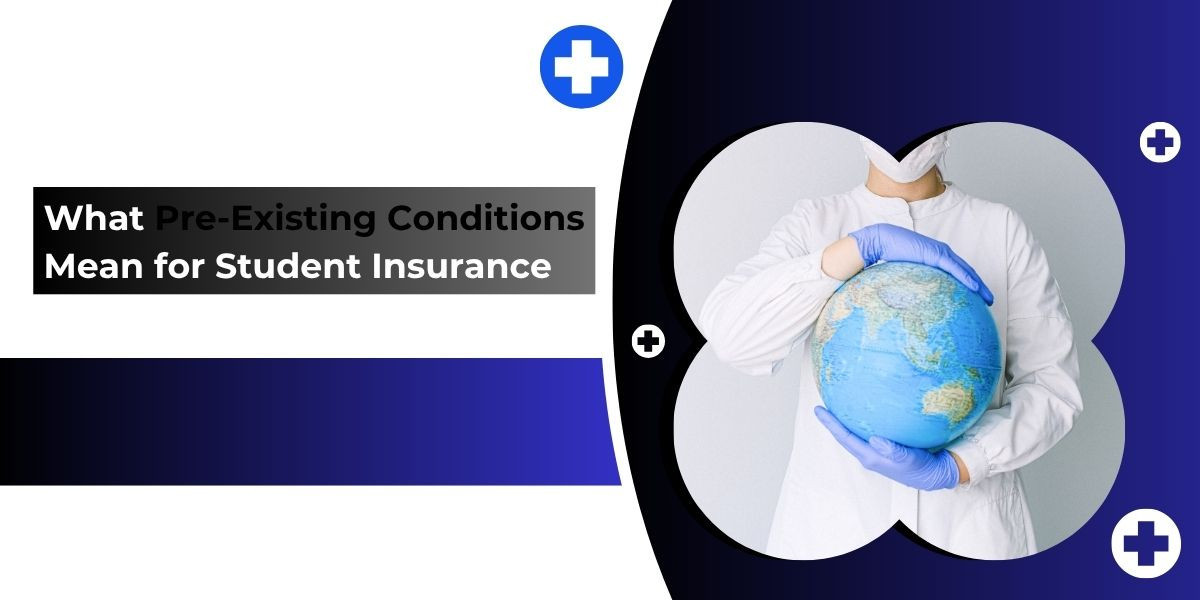When international students travel to the United States or any other country for higher education, health coverage becomes a top priority. Navigating the landscape of student insurance can be tricky—especially when you have a pre-existing condition. Whether it's asthma, diabetes, or any chronic condition you've been managing, it's vital to understand how it affects your coverage under student health insurance.
This blog will help you understand what pre-existing conditions are, how they impact your insurance eligibility and benefits, and how to find the right student abroad insurance for your situation.
What Is a Pre-Existing Condition?
A pre-existing condition is any illness, injury, or medical condition that existed before the start of your insurance policy. This includes both diagnosed and undiagnosed conditions, such as:
Asthma
Diabetes
High blood pressure
Mental health disorders
Pregnancy
In the context of health insurance for international students, pre-existing conditions are critical because many insurance providers either exclude them or have a waiting period before coverage begins.
Why Pre-Existing Conditions Matter for Students
When applying for international medical insurance for students, disclosing your health history is essential. Insurance companies use this information to evaluate risk and determine if they will:
Cover the condition
Impose a waiting period
Exclude the condition from the policy
This can directly affect your out-of-pocket expenses and the care you can receive while studying abroad.
Coverage Varies by Policy
Not all student insurance policies treat pre-existing conditions the same way. Here are the common scenarios:
1. Exclusion from Coverage
Some plans do not cover any costs associated with pre-existing conditions. This means you’ll have to pay for all treatment out of pocket.
2. Coverage with Waiting Period
Many plans include a waiting period, typically 6 to 12 months, before pre-existing conditions are covered. If you're enrolling in a student overseas health insurance plan, make sure you know the timeline.
3. Immediate Coverage (Limited Plans)
Some premium or university-sponsored plans might offer immediate coverage for pre-existing conditions, especially if required by law or institution policy. However, these plans are usually more expensive.
Understanding Look-Back Periods
Insurance providers often use a “look-back period” to determine if a condition qualifies as pre-existing. This period typically ranges from 6 months to 2 years before your insurance coverage begins. If you were diagnosed, treated, or showed symptoms during this time, your condition may be classified as pre-existing.
For student health insurance, this look-back period helps define eligibility and policy limitations.
What You Should Do If You Have a Pre-Existing Condition
1. Get Documentation
Keep a record of your medical history, prescriptions, and treatments. This will help if you need to dispute a denial or seek prior approval for treatment.
2. Choose a Plan That Covers Pre-Existing Conditions
Some student abroad insurance policies specifically cater to students with ongoing medical needs. These plans may cost more but offer peace of mind.
3. Plan Ahead for Waiting Periods
If your policy includes a waiting period, ensure you have enough medication or alternative arrangements for the first few months.
Exceptions and Special Considerations
Pregnancy
Some health insurance for international students does not cover maternity unless purchased as an add-on or through a comprehensive plan.
Mental Health
While mental health coverage has improved in recent years, it’s still often treated separately. Ensure your student insurance includes provisions for therapy or psychiatric care if needed.
Preventive Care
Most plans do not cover preventive care for pre-existing conditions during the waiting period. This can include check-ups, lab tests, and specialist consultations.
Tips for Choosing the Right Plan
Compare Plans Carefully: Don't just look at the premium—examine coverage details, waiting periods, and exclusions.
Ask About Pre-Existing Condition Clauses: When in doubt, ask the provider directly about how your condition will be handled.
Look for Local Support: Choose a provider that offers customer support in your native language or has a responsive helpline.
If you're studying in the U.S., consider plans that align with visa requirements and local healthcare access. Many student overseas health insurance providers design policies specifically for F1 or J1 visa holders.
Why It Matters
Ignoring pre-existing conditions when choosing a policy can lead to significant financial stress and limited access to care. The right student health insurance ensures you're covered when it matters most—so your studies aren’t interrupted by unexpected medical issues.
Final Thoughts
Understanding how pre-existing conditions affect your student insurance is essential for your health, safety, and peace of mind while studying abroad. Whether you’re purchasing international medical insurance for students or a comprehensive student overseas health insurance plan, being informed helps you avoid costly surprises and ensures you get the care you need.
As an international student, your focus should be on your education—not on navigating complex insurance loopholes. Choose wisely, read the fine print, and stay proactive about your health coverage.









